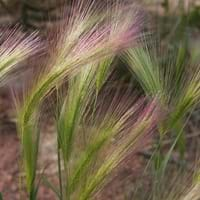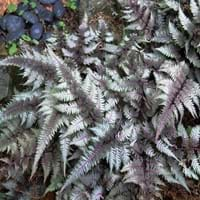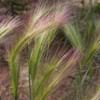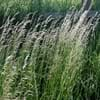Life Span
Perennial
Perennial
Origin
Europe, Asia
China, Japan, Korea
Types
not available
Not available
Habitat
Grassland
Temperate Regions
USDA Hardiness Zone
4-8
5-8
AHS Heat Zone
Not Available
8-1
Sunset Zone
2a, 2b, 3a, 3b, 4, 5, 6, 7, 8, 9, 10, 14, 15, 16, 17, 21, 22, 23, 24
1a, 1b, 2a, 2b, 3a, 3b, 4, 5, 6, 7, 8, 9, 14, 15, 16, 17, 18, 19, 20, 21, 22, 23, 24
Habit
Clump-Forming
Clump-Forming
Flower Color
White
Burgundy
Flower Color Modifier
Bicolor
Bicolor
Fruit Color
Not Available
Not Available
Leaf Color in Spring
Purple, Dark Green
Green, Gray Green, Silver
Leaf Color in Summer
Light Green
Green, Gray Green, Silver
Leaf Color in Fall
Purple, Dark Green
Green, Gray Green, Silver
Leaf Color in Winter
Tan
Not Available
Leaf Shape
Grass like
Toothed
Plant Season
Summer, Fall
Spring, Summer, Fall
Sunlight
Full Sun, Partial Sun
Full Shade, Partial shade
Growth Rate
Medium
Medium
Type of Soil
Loam
Loam, Sand
The pH of Soil
Acidic, Neutral, Alkaline
Acidic, Neutral
Soil Drainage
Average
Poorly Drained
Bloom Time
Spring, Late Spring, Early Summer, Summer
Not Available
Tolerances
Wet Site, Salt
Wet Site
Where to Plant?
Ground
Ground
How to Plant?
Seedlings
Seedlings, Spores, Tissue culture
Plant Maintenance
Medium
Medium
Watering Requirements
Requires a lot of watering, Requires regular watering
Medium
In Summer
Lots of watering
Lots of watering
In Spring
Ample Water
Moderate
In Winter
Moderate
Average Water
Soil pH
Acidic, Neutral, Alkaline
Acidic, Neutral
Soil Type
Loam
Loam, Sand
Soil Drainage Capacity
Average
Poorly Drained
Sun Exposure
Full Sun, Partial Sun
Full Shade, Partial shade
Pruning
Prune to control growth
Remove damaged leaves, Remove dead branches, Remove dead leaves
Fertilizers
Requires high amount of nitrogen
All-Purpose Liquid Fertilizer
Pests and Diseases
Red blotch
Pest Free
Plant Tolerance
Wet Site
Drought
Flower Petal Number
Single
Single
Foliage Texture
Medium
Fine
Foliage Sheen
Matte
Glossy
Attracts
Not Available
Butterflies
Allergy
Asthma, conjunctivitis, Rhinitis
no allergic reactions
Aesthetic Uses
Not Used For Aesthetic Purpose
Not Used For Aesthetic Purpose
Beauty Benefits
Not Available
Not Available
Edible Uses
No
Not Available
Environmental Uses
Food for animals, Food for insects, Wildlife
Air purification
Medicinal Uses
No Medicinal Use
No Medicinal Use
Part of Plant Used
Whole plant
Not Available
Other Uses
cultivated as pasture or hay crop, Food for animals, Food for insects
Used as Ornamental plant
Used As Indoor Plant
No
No
Used As Outdoor Plant
Yes
Yes
Garden Design
Bedding Plant, Feature Plant, Groundcover
Groundcover, Mixed Border
Botanical Name
ALOPECURUS
ATHYRIUM niponicum
Common Name
Foxtail Grass
Red Beauty, Pictum Cristatum
In Hindi
Foxtail Grass
Japanese painted fern
In German
Foxtail Grass
Japanische gemalt Farn
In French
Foxtail Grass
Athyrium niponicum
In Spanish
Hierba de cola de zorra
Helecho pintado japonés
In Greek
αλωπέκουρου Grass
Japanese painted fern
In Portuguese
grama de foxtail
Fern pintado japonês
In Polish
ber trawy
Wietlica japońska
In Latin
panicum Grass
Japanese painted fern
Phylum
Magnoliophyta
Pteridophyta
Class
Liliopsida
Pteridopsida
Order
Cyperales
Agaricales
Family
Poaceae
Dryopteridaceae
Genus
Alopecurus
Athyrium
Clade
Not Available
Not Available
Tribe
Not Available
Not Available
Subfamily
Not Available
Not Available
Number of Species
Not Available
Properties of Foxtail Grass and Japanese Painted Fern
Wondering what are the properties of Foxtail Grass and Japanese Painted Fern? We provide you with everything About Foxtail Grass and Japanese Painted Fern. Foxtail Grass doesn't have thorns and Japanese Painted Fern doesn't have thorns. Also Foxtail Grass does not have fragrant flowers. Foxtail Grass has allergic reactions like Asthma, conjunctivitis and Rhinitis and Japanese Painted Fern has allergic reactions like Asthma, conjunctivitis and Rhinitis. Compare all the properties and characteristics of these two plants. Find out which of these plant can be used as indoor plant. If you are interested to decorate your house and garden, find out aesthetic uses, compare them and select the plant which will beautify your surrounding. Along with beautification, try comparing medicinal and edible uses of Foxtail Grass and Japanese Painted Fern and you can choose the plant having best and most benefits.
Season and Care of Foxtail Grass and Japanese Painted Fern
Season and care of Foxtail Grass and Japanese Painted Fern is important to know. While considering everything about Foxtail Grass and Japanese Painted Fern Care, growing season is an essential factor. Foxtail Grass season is Summer and Fall and Japanese Painted Fern season is Summer and Fall. The type of soil for Foxtail Grass is Loam and for Japanese Painted Fern is Loam, Sand while the PH of soil for Foxtail Grass is Acidic, Neutral, Alkaline and for Japanese Painted Fern is Acidic, Neutral.
Foxtail Grass and Japanese Painted Fern Physical Information
Foxtail Grass and Japanese Painted Fern physical information is very important for comparison. Foxtail Grass height is 30.50 cm and width 30.50 cm whereas Japanese Painted Fern height is 20.30 cm and width 60.00 cm. The color specification of Foxtail Grass and Japanese Painted Fern are as follows:
Foxtail Grass flower color: White
Foxtail Grass leaf color: Purple and Dark Green
Japanese Painted Fern flower color: Burgundy
- Japanese Painted Fern leaf color: Green, Gray Green and Silver
Care of Foxtail Grass and Japanese Painted Fern
Care of Foxtail Grass and Japanese Painted Fern include pruning, fertilizers, watering etc. Foxtail Grass pruning is done Prune to control growth and Japanese Painted Fern pruning is done Remove damaged leaves, Remove dead branches and Remove dead leaves. In summer Foxtail Grass needs Lots of watering and in winter, it needs Moderate. Whereas, in summer Japanese Painted Fern needs Lots of watering and in winter, it needs Average Water.





